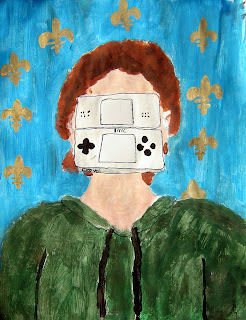You need:
- white drawing sheet A4 size
- black markers in different sizes
- yellow or orange marker
- liquid watercolour
- brushes
- black construction paper
- photographs of owls
Discuss with the children characteristics from owls and look at some photographs. Owls have large forward-facing eyes and ear-holes, a hawk-like beak, a flat face, and usually a conspicuous circle of feathers - a facial disc - around each eye. Although owls have binocluar vision, their large eyes are fixed in their sockets, as with other birds, and they must turn their entire head to change views.
Owls are far-sighted, and are unable to see anything clearly within a few inches of their eyes. Their far vision, particularly in low light, is exceptionally good. Owls cannot turn their heads completely backwards. They can turn their head 135 degrees in either direction; they can thus look behind their own shoulders, with a total 270 degree field of view.
Some owls have have ear-tufts on the sides of the head. Those ear-tufts are made of feathers and indicate the status: a grown-up, strong healthy owl with a large territory has large ear-tufts. Young, weak, sick or old owls have smaller ear-tufts. Most owls have a mixture of brown, black, white, and gray feathers. These colours provide camouflage, and so the owls can easily hide.
Children sketch an owl on a branch with pencil, considering the characteristics from owls we talked about before. After this, patterns have to be made in the body parts of the owl, with different sizes of black markers. By making different patterns, those body parts must be recognized. Only the eyes and the beak may be coloured yellow or orange, the rest is black or white.
When finished, the background has to be painted with yellow liquid watercolour. Don't touch the black marker lines if you didn't use a waterproof one, because the black ink will run out then. Stay away about a half centimeter from your drawing. Finally paste the artwork on black construction paper.
.jpg)
.jpg)

















































